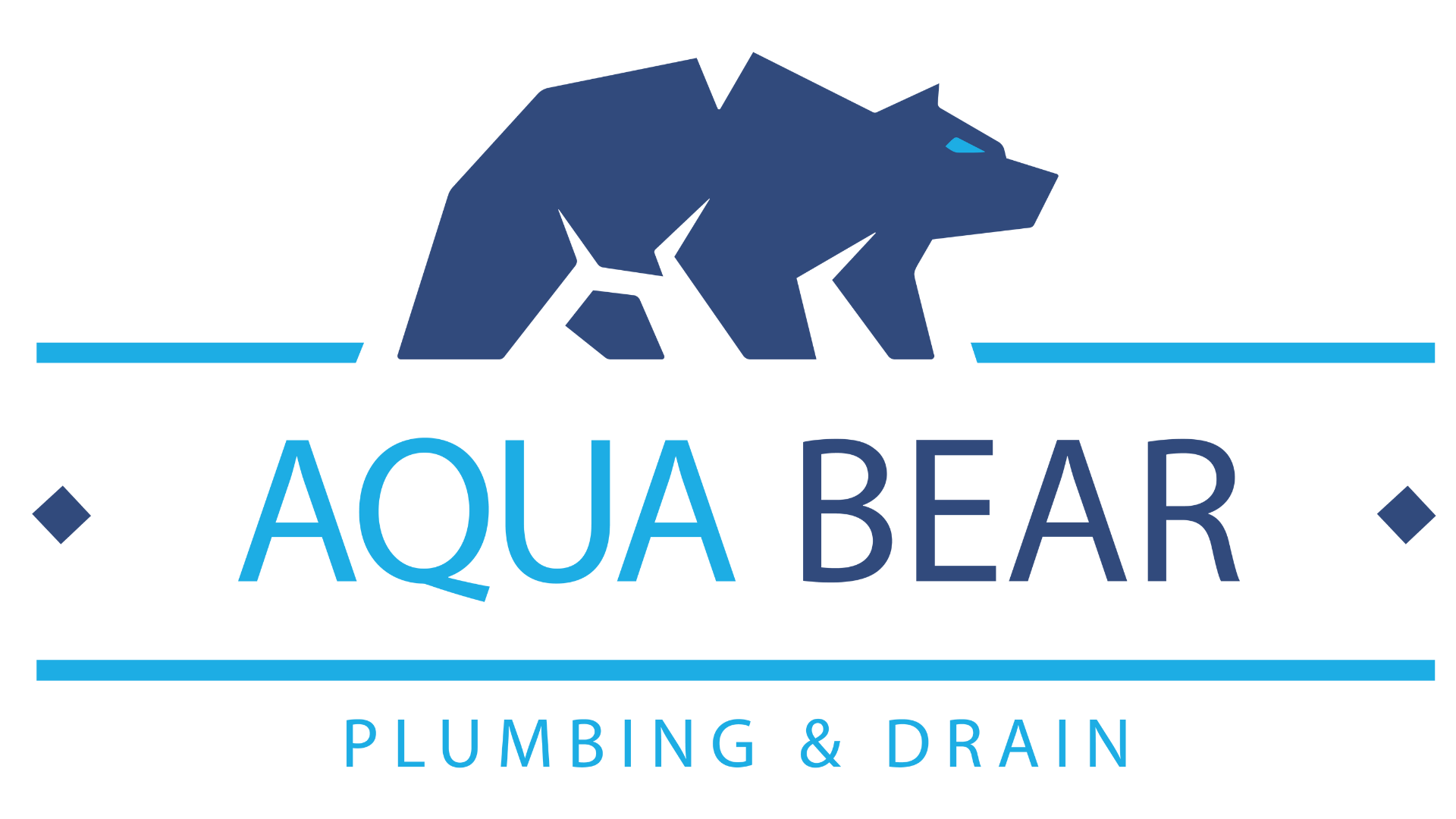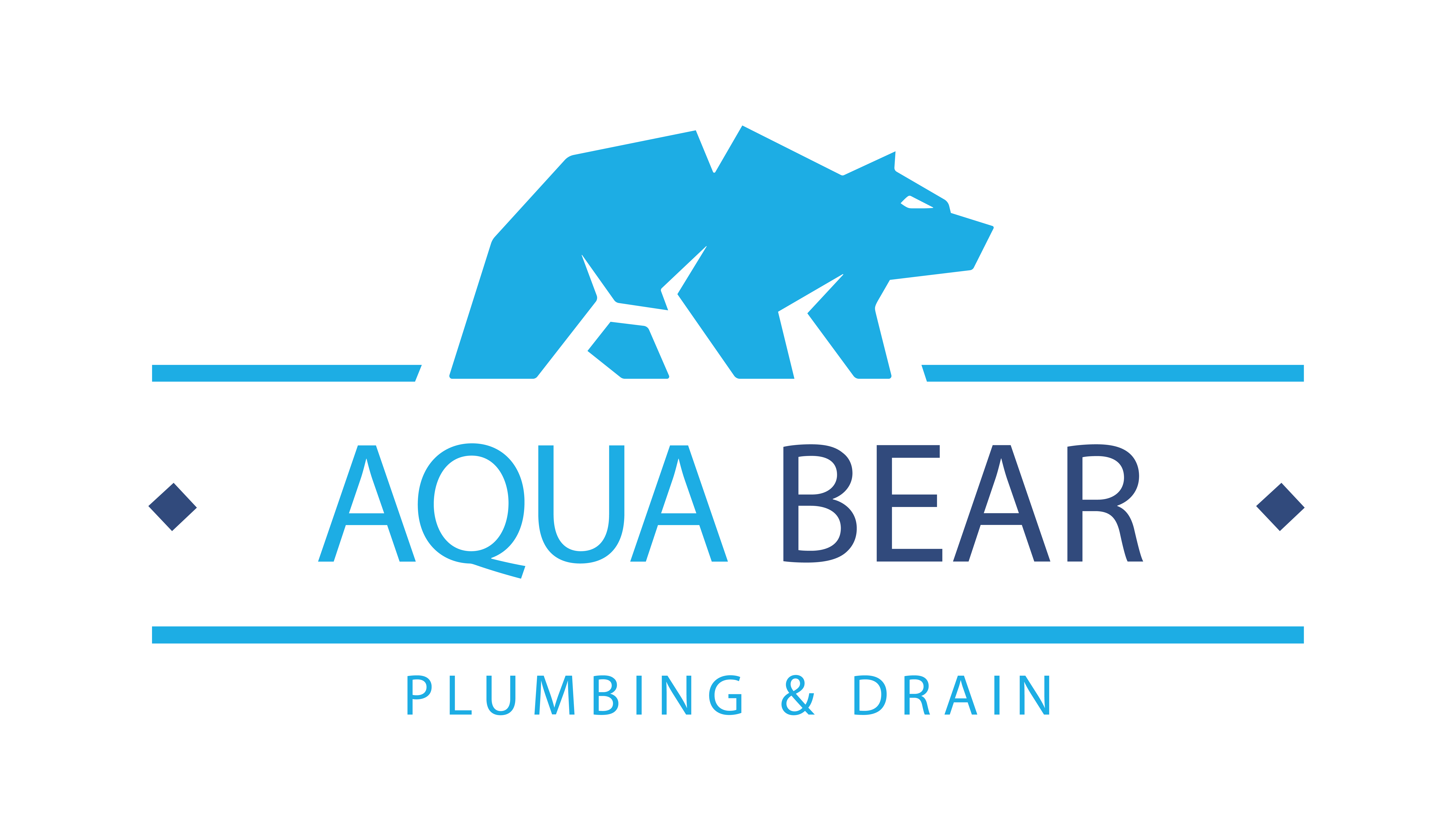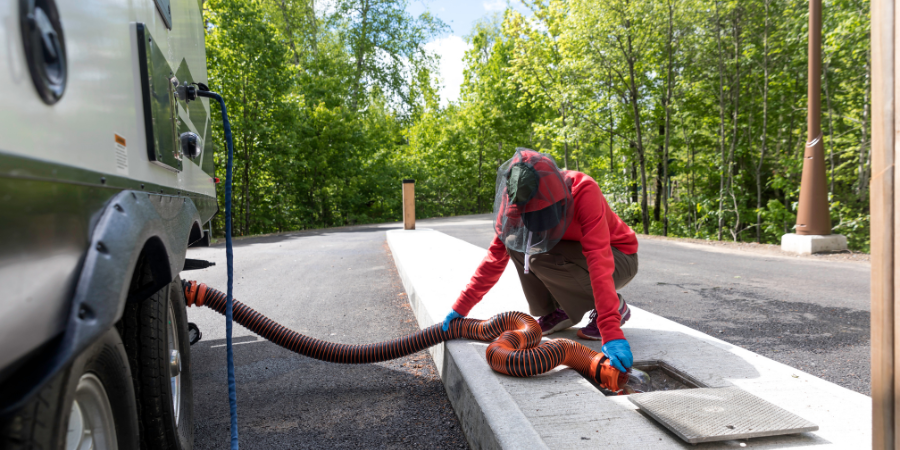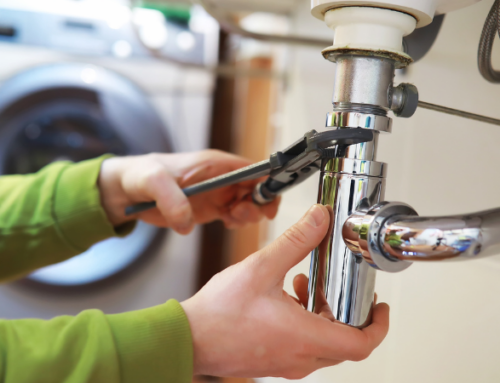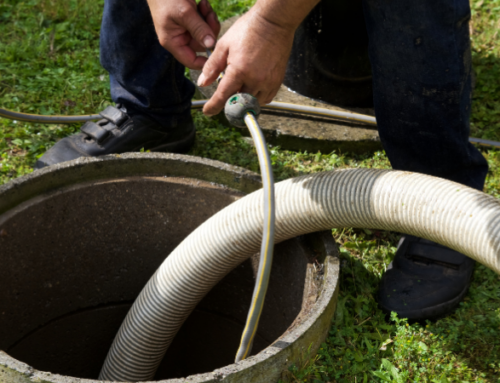What Are Sewer Lines?
Sewer lines are underground pipes that transport wastewater from your home’s plumbing fixtures and appliances. They play a crucial role in maintaining your home’s cleanliness and sanitation by efficiently removing waste.
In more populated areas, the sewer line is connected to the public sewer system where wastewater is carried away for treatment. In more rural areas, the municipal sewer system is sometimes unavailable. In these cases, the sewer line is attached to an on-site septic system.
Common Types
There are various types of sewer lines, each with its own advantages and disadvantages. We will give an overview of each and look at factors such as durability, cost, and ease of installation for today’s three most common pipe materials used for sewer lines. Understanding the type of sewer line in your home can help you determine the best maintenance practices.
PVC
PVC or Polyvinyl chloride pipe is a white plastic pipe used extensively in many plumbing applications.
Durability
PVC pipes are highly durable and resistant to corrosion and chemical damage. They can withstand a wide range of temperatures and are less prone to cracking compared to other materials. However, they may become brittle over time when exposed to prolonged UV radiation, although this is less of an issue for underground sewer lines.
Costs
PVC pipes are generally affordable, making them a popular choice for both residential and commercial sewer lines. Their cost-effectiveness is one of the primary reasons for their widespread use. Additionally, they have a long lifespan, which translates to lower maintenance costs over time.
Ease of Installation
PVC pipes are lightweight and easy to handle, which simplifies the installation process. They can be easily cut and joined using solvent cement, making them a preferred choice for DIY projects and professional installations alike. The smooth interior of PVC pipes also reduces friction, ensuring efficient wastewater flow.
Cast Iron
Another popular pipe material used in constructing sewer lines is cast iron. As one can imagine, this pipe material is long-lasting and ideal for sewer line construction.
Durability
Cast iron pipes are known for their exceptional durability and strength. They are highly resistant to external pressure, making them ideal for use in areas with heavy traffic or shifting soils. Cast iron pipes also have a long lifespan, often exceeding 50 years, when properly maintained.
Costs
Cast iron pipes are more expensive than PVC pipes, both in terms of material costs and installation expenses. The higher cost is due to their superior strength and durability. Despite the initial investment, the long lifespan of cast iron pipes can offset the costs over time, especially in high-stress environments.
Ease of Installation
The installation of cast iron pipes is more labor-intensive compared to PVC. They are heavy and require specialized tools and equipment for cutting and joining. The process usually involves using mechanical couplings or lead and oakum joints, which can be time-consuming. Due to their weight and the complexity of installation, professional installation is typically recommended.
HDPE
High-Density Polyethylene is used for sewer lines as well as many above-ground applications and is known for its ease of installation and long life.
Durability
HDPE pipes are highly durable and flexible, making them resistant to cracking and breaking. They are also resistant to corrosion and chemical damage, which enhances their longevity. HDPE pipes can withstand extreme temperatures and are suitable for both underground and above-ground installations.
Costs
The cost of HDPE pipes is moderate, falling between PVC and cast iron. While the material itself is relatively affordable, the installation process can be more expensive due to the need for specialized welding techniques. However, their long lifespan and low maintenance requirements can make them cost-effective in the long run.
Ease of Installation
HDPE pipes are lightweight and easy to transport, which simplifies the installation process. They can be joined using heat fusion, which creates a seamless, leak-proof connection. This method requires specialized equipment and trained personnel, but it results in a highly reliable system. HDPE pipes’ flexibility also allows for installation in challenging terrains and around obstacles without the need for additional fittings.
Common Problems
Sewer lines, regardless of their type, are known to have several problems, all of which worsen as the sewer line ages. Here, we will list the four most common culprits that lead to sewer line issues.
Blockages
Blockages are one of the most common issues faced by sewer lines. They can be caused by the accumulation of debris, grease, or foreign objects that obstruct the flow of wastewater. Regular cleaning and proper disposal habits can prevent blockages.
Tree Roots
Tree roots can infiltrate sewer lines through small cracks or joints, causing significant damage and blockages. Trees seeking water and nutrients can cause severe pipe damage over time. Addressing tree root infiltration promptly is crucial to prevent extensive damage.
Soil Shifting
Soil shifting due to earthquakes or construction activities can lead to misaligned or broken sewer lines. Awareness is key to identifying the consequences of these activities, and homeowners need to act fast when suspecting a soil-related act may have occurred. Regular inspections can also identify potential issues early, allowing for timely repairs and minimizing damage.
Poor Disposal Habits
Improper disposal of items such as grease, wipes, and hygiene products can lead to blockages and damage to sewer lines. Educating household members about what can and cannot be flushed or poured down the drain is essential for maintaining a healthy sewer system.
Signs Of An Unhealthy Sewer Line
Because sewer lines are installed far beneath the surface, it is impossible to assess their condition and any developing problems visually. However, there are visible signs that can indicate an issue is underway.
Pooling Sewage
Pooling sewage in your yard or basement is a clear sign of a sewer line problem. This could indicate a blockage or a break in the sewer line, requiring immediate attention, especially since it represents a serious health hazard.
Sewage Backups
Sewage backups in sinks, toilets, or showers are another indication of an unhealthy sewer line. This is often caused by blockages or damage to the sewer pipes. As the wastewater attempts to exit it cannot and is forced to reverse direction and bubble up through indoor drains.
Slow-To-Empty Drains
If your drains are slow to empty, it could be a sign of a blockage or buildup in the sewer line. Again, the partially clogged line will only allow a small amount of wastewater to flow out, leaving used water to accumulate in sinks, showers, and other fixtures and appliances. Regular cleaning and maintenance can help prevent this issue from escalating.
Foul Odors
Foul odors coming from drains or around your property can indicate a problem with your sewer lines. This is often caused by blockages or leaks, which can lead to the accumulation of waste and the release of unpleasant smells. These smells are invitations to pests and rodents in search of food and water, so infestations often accompany sewer line issues.
Prevention
As with any plumbing problem, the best defense is prevention. Here, we offer some suggestions that can proactively protect your sewer line.
Regular Inspections
Regular inspections by a professional plumber can help identify potential issues before they escalate into major problems. Inspecting your sewer lines at least once a year is recommended to ensure their optimal functioning.
Proper Disposal Habits
Adopting proper disposal habits is crucial for maintaining the health of your sewer lines. Avoid flushing non-degradable items and pouring grease down the drain. Using strainers and grease traps can help prevent debris and grease from entering the sewer system.
Tree Root Maintenance
To prevent tree roots from infiltrating your sewer lines, consider planting trees and shrubs away from sewer lines. If you already have trees near your sewer lines, regular maintenance and root barriers can help keep the roots at bay.
Strainers And Grease Traps
Installing strainers in sinks and showers can help catch debris before it enters the sewer system. Grease traps are particularly useful in kitchens, as they prevent grease from clogging the pipes.
Cleaning Methods
Professionals have the experience, expertise, and knowledge on how to operate specialized equipment to keep your sewer line clean and clear. Here are three popular cleaning methods.
Hydro Jetting
Hydro jetting is a highly effective method for cleaning sewer lines. It involves using high-pressure water to remove blockages, debris, and buildup from the inside of the pipes. This method is particularly useful for clearing stubborn blockages and maintaining a clean sewer system.
Snaking And Augering
Snaking and augering involve using a flexible cable or rod with a specialized tip to break up and remove blockages from sewer lines. This method is commonly used for clearing smaller blockages and tree roots.
Enzyme Cleaners
Enzyme cleaners are a natural and eco-friendly option for maintaining clean sewer lines. These cleaners use enzymes to break down organic matter, preventing buildup and blockages. Regular use of enzyme cleaners can help keep your sewer system running smoothly.
Looking For Help In Keeping Your Sewer Line Healthy?
Maintaining healthy sewer lines is essential for the overall functioning of your plumbing system and the hygiene of your home. By understanding common problems and adopting preventive measures, you can avoid costly repairs and ensure the longevity of your sewer system.
Regular inspections, proper disposal habits, and the use of appropriate cleaning methods are crucial for maintaining a healthy sewer line. If you notice any signs of an unhealthy sewer line, such as pooling sewage or foul odors, it is important to address the issue promptly to prevent further damage.
For professional sewer line maintenance and repair services in Vista, contact Aqua Bear Plumbing and Drain. With the right expertise and tools, we can help keep your sewer lines in optimal condition and prevent potential problems from arising. Don’t wait until it’s too late – take proactive steps to ensure the health of your sewer system today.
